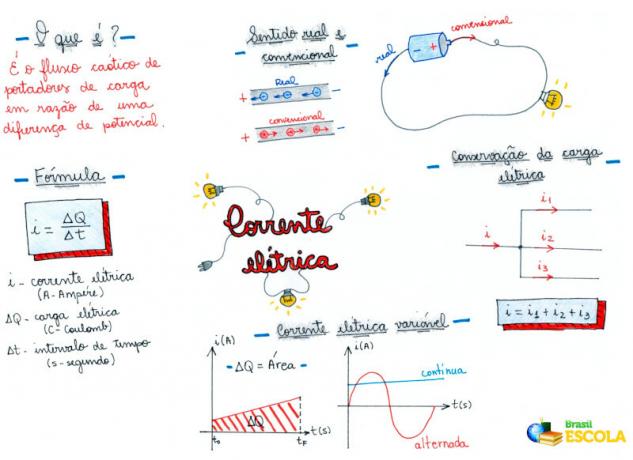Thermal energy or internal energy is defined as the sum of the kinetic and potential energy associated with the microscopic elements that make up matter.
The atoms and molecules that make up bodies have random movements of translation, rotation and vibration. This movement is called thermal agitation.
The variation of thermal energy in a system occurs through work or heat.
For example, when we use a hand pump to inflate a bicycle tire, we observe that the pump becomes heated. In this case, the increase in thermal energy occurred by mechanical energy transfer (labor).
Heat transfer normally causes an increase in the agitation of molecules and atoms in a body. This produces an increase in thermal energy and consequently an increase in its temperature.
When two bodies with different temperatures are brought into contact, energy transfer occurs between them. After a certain period of time, both will have the same temperature, that is, they will reach the thermal balance.

Thermal energy, heat and temperature
Although the concepts of temperature, heat and thermal energy are confused in everyday life, physically they do not represent the same thing.
Heat is energy in transit, so it makes no sense to say that a body has heat. In fact, the body has internal or thermal energy.
Temperature quantifies the notions of hot and cold. Furthermore, it is the property that governs the transfer of heat between two bodies.
The transfer of energy in the form of heat only happens due to the difference in temperature between two bodies. It occurs spontaneously from the body with the highest temperature to the lowest temperature.
There are three ways the heat spread: conduction, convection and irradiation.
At driving, thermal energy is transmitted through molecular agitation. At convection energy propagates through the movement of the heated fluid, as density varies with temperature.
already in thermal irradiation, the transmission takes place through electromagnetic waves.
To learn more, read also Heat and Temperature
Formula
The internal energy of an ideal gas, formed by only one type of atom, can be calculated by the following formula:

Being,
U: internal energy. The unit in the international system is the joule (J)
n: mole number of gas
R: ideal gas constant
T: temperature in kelvin (K)
Example
What is the internal energy of 2 moles of a perfect gas, which at a given moment has a temperature of 27 °C?
Consider R=8.31 J/mol. K.
First we must change the temperature to kelvin, so we have:
T = 27 + 273 = 300 K
Then just replace it in the formula
Use of thermal energy
Since the beginning, we have used thermal energy from the Sun. In addition, man has always sought to create devices capable of converting and multiplying these resources into useful energy, mainly in the production of electricity and transportation.
The transformation of thermal energy into electrical energy, to be used on a large scale, is carried out in thermoelectric and thermonuclear plants.
In these plants, some fuel is used to heat the water in a boiler. The steam produced moves the turbines connected to the electric power generator.
In the thermonuclear plants, the heating of water is done through thermal energy released from the nuclear fission reaction of radioactive elements.
already the thermoelectric plants, use the burning of renewable and non-renewable raw materials for the same purpose.
Advantages and disadvantages
Thermoelectric power plants, in general, have the advantage of being able to be installed close to consumption centers, which reduces costs with the installation of distribution networks. In addition, they do not depend on natural factors to operate, as is the case with plants hydroelectric plants and wind.
However, they are also the second largest producer of gas. greenhouse effect. Its main impacts are the emission of polluting gases that reduce air quality and the warming of river waters.
Plants of this type present differences depending on the type of fuel used. In the table below, we show the advantages and disadvantages of the main fuels currently used.
type of plant |
Benefits |
Disadvantages |
|---|---|---|
Thermoelectric to Coal |
• High productivity • Low cost of fuel and construction |
• It is the one that emits the most greenhouse gases • The gases emitted cause acid rain
• Pollution causes respiratory problems |
Thermoelectric to natural gas |
• Less local pollution compared to coal • Low construction cost |
• High greenhouse gas emissions • Very large variation in fuel cost (associated with oil price) |
Thermoelectric to biomass |
• Low cost of fuel and construction • Low greenhouse gas emissions |
• Possibility of deforestation for the cultivation of plants that will give rise to biomass. • Dispute land space with food production |
Thermonuclear |
• There is practically no emission of greenhouse gases • High productivity |
• High cost • Production of radioactive trash
• The consequences of accidents are very serious |
See too:
- Energy sources
- Energy Sources Exercises (with template).


